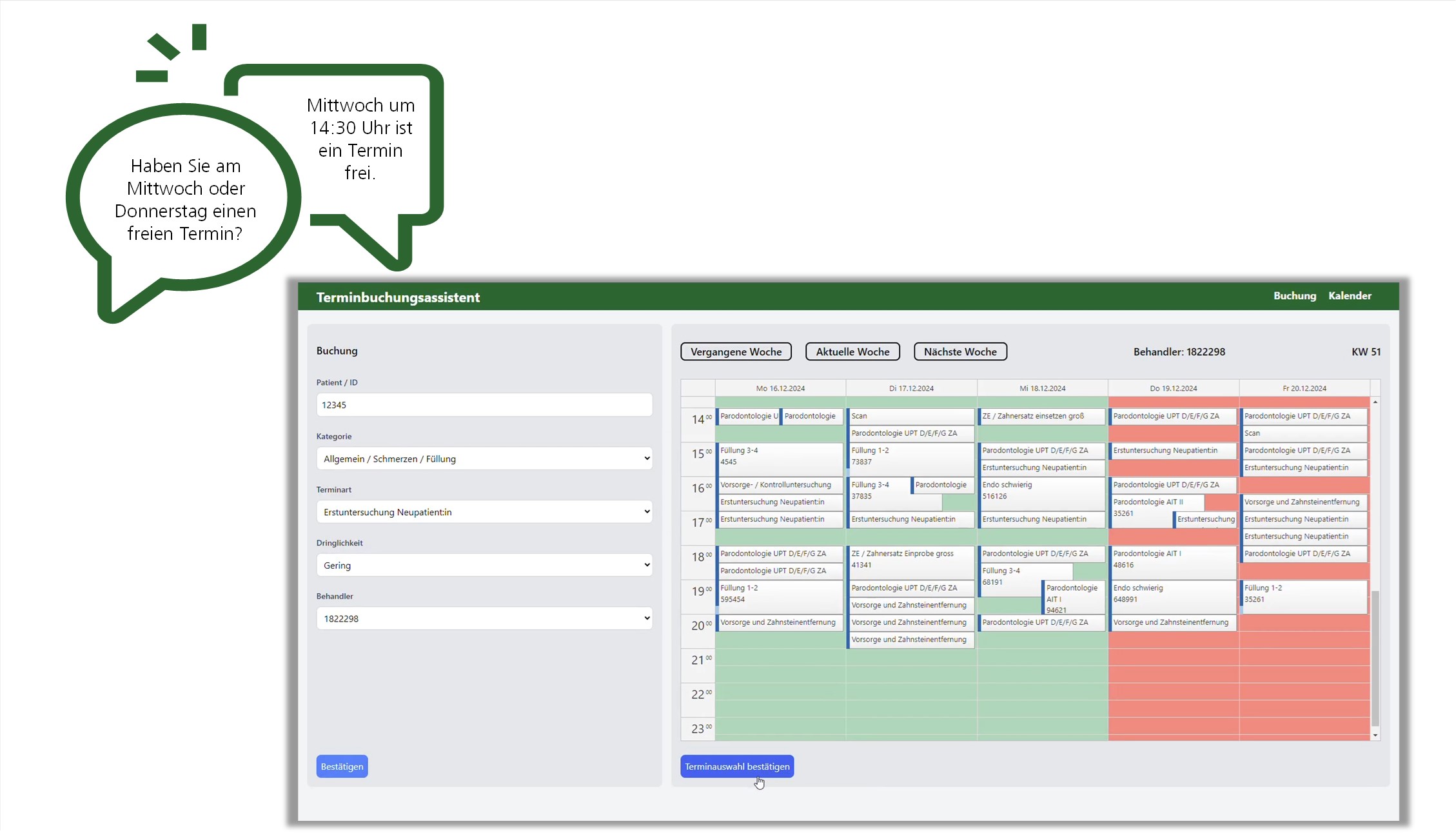AI-based appointment optimization by predicting appointment bookings, no-shows and cancellations
Initial situation
ZTK is a dental practice network with three locations in Baden-Württemberg. The treatment spectrum includes treatment types with variable contribution margins, which are frequented differently and require different personnel deployment. Currently, the management of future capacity utilization in practices for the next three to six weeks is only based on empirical values, which leads to reduced efficiency and productivity due to long waiting times for patients and idle times for practitioners (Dantas et al. 2018).
To ensure and support efficient scheduling, ZTK's database for an intelligent forecasting model was examined in the AI Innovation Center's Quick Check to anticipate future appointment requests and predict capacity utilization.
The quick check showed to our great satisfaction that the data enables a good forecast of capacity utilization for 30 days in advance.
Solution idea
The aim of the exploring project was to develop a prototype that enables AI-based optimization of appointment scheduling by forecasting future appointments, taking absences into account. No shows (i.e. unattended appointments without cancellation) and last-minute cancellations were to be analyzed and also taken into account in the prototype if a recognizable system was identified.
To this end, an AI prototype was developed that uses traffic light logic to suggest which days should be preferred for appointment requests in order to achieve the most efficient capacity utilization possible. This prototype is to be integrated into the existing appointment management system. The analysis of no shows and appointment cancellations is incorporated into the prototype according to statistical significance.
Benefit
AI-based scheduling uses historical data to plan more systematically, making better use of free and freed-up capacity. This leads to:
- Increase in turnover of the dental practice and higher financial compensation for the treatment-specific revenue share;
- Reduction of stress among practitioners through less uncertainty and thus improved treatment quality;
- shorter waiting times for appointments;
- Relief for administrative staff for scheduling and making appointments.
The application can also generate the listed added value in other dental practices and other medical specialties. In the future, other factors influencing appointment scheduling could be incorporated into the prototype, such as the time of year and vacation periods.
Implementation of the AI application
The AI application was developed as a demonstrator and tested in a proof-of-concept. Various architectures of neural networks that incorporate temporal relationships, such as temporal convolutional, recurrent networks or LSTM (Long short-term Memory), were trained to create the AI model. Various input parameters such as practitioners, workload, appointments that have taken place and appointments already planned for the future were used. The reliability of the AI application was tested and validated taking into account different time periods and an analysis of the individual practitioners.

